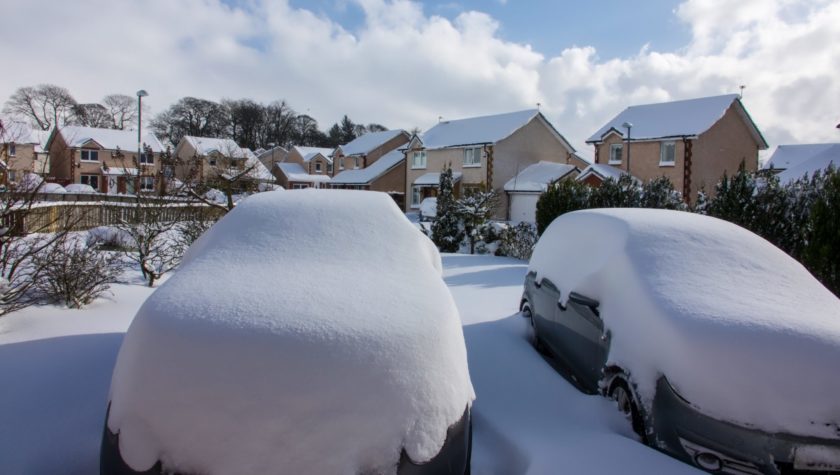A new review of research on future weather patterns highlights the importance of a rollout of diverse renewable generation technologies to ensure the resilience of the UK’s energy systems to stresses brought about by a changing energy mix and climate change.
Publishing a new report commissioned from the Met Office, the National Infrastructure Commission said meeting Net Zero targets and creating a low-carbon economy in the most cost-effective way by 2050 requires identification of the optimal mix of future generating sources.
Greater awareness of future weather patterns can help to identify the best options to meet and manage demand, with the Met Office’s report already indicating the potential advantage of complementary wind and solar technologies in dealing with variable meteorological conditions across the country, enabling the UK to support a highly renewable energy system able to cope with intermittent generation.
The Met Office reviewed the impact of a variety of extreme stress events, including very cold winters that push up demand and summer ‘wind droughts.’ The review highlights the need for intelligent deployment of renewables, combined with other sources of flexibility such as storage, demand management and use of interconnectors, in order to maintain resilient energy supplies that communities rely on.
Increased innovation in forecasting techniques could also play a crucial role in allowing energy companies to take mitigating action ahead of any extreme weather event or ensure that alternative generating sources, or supplies from other markets, were available to smooth out any dip in overall supply. In addition, development of new statistical models would further improve the UK’s capacity to plan ahead.
Chair of the National Infrastructure Commission Sir John Armitt said:
“Violent storm events and excessively hot summers are a growing feature of our weather and highlight the need to deliver Net Zero. Prioritising renewable energy is essential to reach that goal, but the challenge created by intermittent supply is significant. The public will want reassurance that however extreme the weather, the lights will stay on.
“The first step is knowing what we face. This review gets us much closer to understanding the opportunities we have to adapt to the effects of adverse weather and what the right mix of generating supply is in response. Onshore wind and solar are vital components in creating truly flexible generation mix and government must therefore ensure they have a future route to market through contracts for difference.”
An energy network for all weathers
Met Office scientists explored available scientific studies to consider a number of weather stress events that would test the resilience of a future UK energy system in which intermittent generation was an increasingly important variable. These were:
- Peak winter residual demand – a combination of low temperatures in winter driving high energy demands, combined with low windspeeds leading to low renewable wind energy, and potential limits on solar generation.
- Summer wind drought – high pressure heatwaves in summer which could lead to a drought of wind supply, exacerbated by possible very low wind speeds, increasing the reliance on solar generation.
- Surplus solar – a combination of low demand due and high solar generation output, leading to residual demand frequently dropping below zero and leading to surplus generating supply
- Wind and solar ramping – major changes in wind speed or solar irradiance over short time periods, both of which could lead to short term surplus and a requirement to curtail supply.
The review also highlights the value of an increasingly flexible and intelligent energy system which can make use of new storage technologies and interconnectors to smooth out the impacts of intermittent generation.
The National Infrastructure Commission aims to use this new research to encourage a broader conversation with the energy sector and government about how best these changes can be met and where new technologies and other solutions can be deployed to ensure the resilience of the UK’s energy. The UK already has the modelling capabilities and forecasting tools available to reduce risks and mitigate against weather-related stresses in a highly renewable energy system.
Tom Butcher, Head of Industry Consultancy at The Met Office said:
“We work across government and industry to provide the best possible independent scientific advice to help our customers solve critical problems on the timescales of weather and climate change.
“Decarbonising the energy system is a critical and complex challenge, and our work with NIC uncovers some fascinating weather and climate-related problems associated with maintaining the future resilience of the energy mix.
“The review has identified the need to develop a set of weather stress factors that can be used by energy modellers to properly test future configurations of the energy system.”
Analysis undertaken for the National Infrastructure Assessment looked at the electricity system costs for a variety of different generation models up to 2050 and two options – heat pumps or the conversion of the gas network to hydrogen – for meeting future heat demand to replace natural gas.
This showed the costs of renewable technologies falling faster than those for nuclear, leading to the Commission’s recommendation that the government should pursue a highly renewable generation mix up to 2050 through mass deployment of renewable technologies, while keeping the nuclear option open.
Notes
- ‘Weather and Climate Related Sensitivities and Risks in a Highly Renewable UK Energy System: A Literature Review’ was commissioned from The Met Office by the National Infrastructure Commission. The Met Office summarised research that has been undertaken on the impact of climate variability on energy networks that are highly dependent on renewable generation. The literature review particularly focussed on extreme stress events in relation to a high renewables scenario and the impact on security of supply.
- The National Infrastructure Assessment, published in July 2018, recommended a highly renewable generation mix as the low-cost option for UK’s energy needs up to 2050. The cost would be comparable to building further nuclear power plants after Hinkley Point C, and cheaper than implementing carbon capture and storage with the existing system. The Assessment called for the electricity system to be running off 50 per cent renewable generation by 2030, as part of a transition to a highly renewable generation mix.
- The Commission is separately undertaking a Resilience Study to consider what action government should take to ensure that the UK’s infrastructure can cope with future changes, disruptions, shocks and accidents, including those resulting from climate change.




